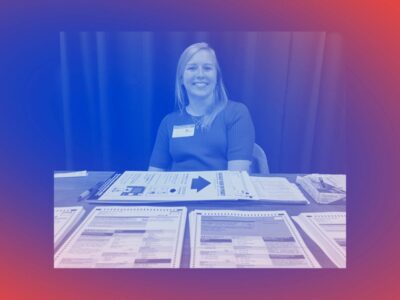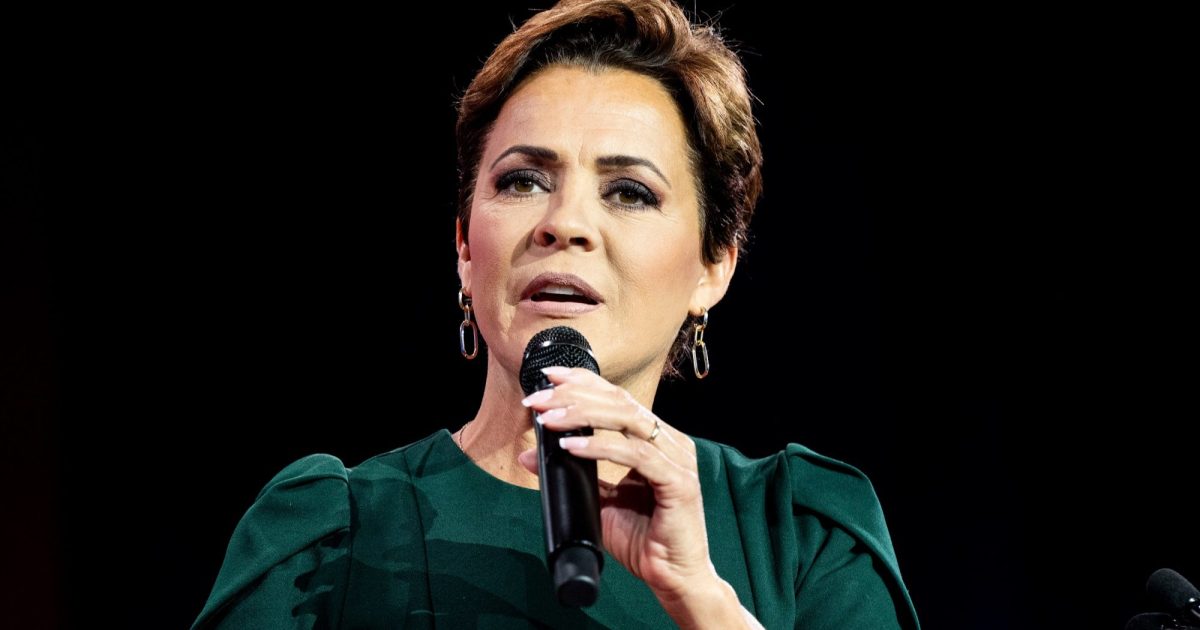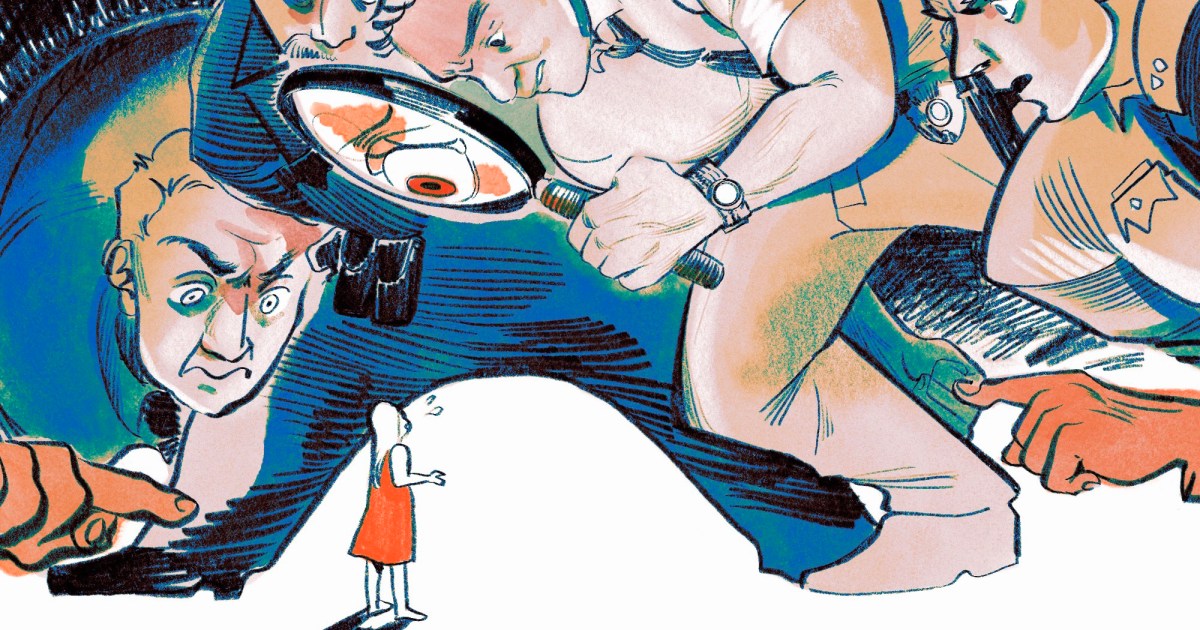
The United States guarantees 7.2 million students with disabilities an equal education. But the system is broken. For this package, we spoke with students, parents, teachers, and advocates about the dire state of—and efforts to fix—programs for students with disabilities. You can read all the stories here.
When Shiloh told me about being restrained by white administrators at his Denver public school, his face was offscreen. I would shy away too—I was a stranger on a Zoom screen asking him questions about a traumatic event. Occasionally, parts of his shirt or curly afro made it into the frame as he sat beside his mother, Lynne, a mental health therapist, her eyes tender and focused on him. I asked, “What did they do to you that you didn’t like?”
“Hurting me,” said Shiloh, age 10. “There was this one time where they had to pick me up and put me on their shoulder.” Then he stopped again. I asked, “Does talking about it make you upset?” No reply.
“How are you feeling, bud?” asked Lynne, who asked me to use only first names due to privacy concerns. She had never heard before that he was thrown over a staff member’s shoulder.
“A tad bit upset,” Shiloh said. Lynne turned away from him, concealing her eyes with her palms.
When Lynne returned her gaze to the screen, her eyes swelled with a shame and grief that is palpable to any self-described “full-time, solo mom” who has a child with a disability and an Individualized Education Program. In an IEP, educators and families collaborate to create a plan specific to the student’s individual needs and catalog the services a student requires to meet the goals outlined in the plan. Because an IEP is a living document, it can be a lot to track, especially for single parents.
“I failed him,” Lynne said. “I brought him to the place that was harming him. I specialize in neurodivergence. I have an education, I know the system, and I still couldn’t protect him.”
Later in our call, I asked Shiloh if he felt he was treated poorly because of his race. “Mm-hmm,” he hummed. I asked, “How did the way you were being treated make you feel about being Black?” Shiloh said, “Kind of bad. Like everyone else was kind of better than me.”
Shiloh’s school told Lynne that he was cursing, kicking, locking himself in a closet, and throwing objects in the classroom. Once, he walked out of his classroom to shoot spitballs onto the ceiling and walls of the boys’ bathroom. Lynne says school officials began alluding to placing him in an affective needs center—a program for students with severe social-emotional issues, where they’re separated from the general-education population.
Lynne knew she was coming face-to-face with a well-documented but alarming pattern: Black boys are much more likely than other children to be diagnosed with behavioral or intellectual problems, and they’re overrepresented among students receiving disability services under the Department of Education’s Individuals With Disabilities Education Act. Black students are more likely to be identified with an emotional disturbance than all other students with disabilities.
This, in turn, makes them more likely than their white counterparts and students of other races to be removed from classrooms and placed in affective needs centers. While sometimes necessary, in general separating kids from the rest of the student body has been shown to result in lower academic outcomes. In recent years, Denver Public Schools was 4.5 times more likely to place Black male students in affective needs centers than kids of any other race or ethnicity.
Too often, these kinds of programs facilitate the segregation of Black students, especially boys, and can be a one-way ticket to a poor education. According to Denver Public Schools data, between 2016 and 2019, only 1 percent of Black students in affective needs centers met or exceeded expectations on statewide assessments for math. (That figure is 3 percent for English language arts.) Of the 55 Black seniors in Denver’s ANCs expected to graduate high school, 21 did. Only six went on to enroll in college.
“Shiloh has ADHD, he is neurodiverse, and he’s a Black boy,” Lynne said. “If my son were a little white girl, he would not have been treated this way.” Lynne withdrew Shiloh from his school in December 2021.
Like Lynne, I, too, know the system. I worked in education for 14 years, and, as a former teacher, I can see both sides.
Here is how it is supposed to work: Every child with a diagnosed disability (nearly 15 percent of all students last year) gets an IEP, like Shiloh did. The Department of Education wants kids with disabilities to remain in classrooms alongside those without disabilities because it boosts learning; the IEP is meant to help the child flourish in such a setting. But in some states, such as Colorado, a child diagnosed with a “serious emotional disability,” defined broadly as “emotional or social functioning which prevents the child from receiving reasonable educational benefit from general-education,” can be removed from the classroom and placed in an affective needs center.
In theory, the system is designed to be tailored to every child’s needs. “IDEA assumes that every child with a disability, the place you start with is the general-education classroom. There are times that it’s appropriate to move away from the general-education classroom based on the individual needs of the child, but you don’t move away from that general-education classroom simply because the child wears a label,” says Paul Foster, the executive director of Colorado DOE’s Office of Special Education. “The system is there to protect every child to ensure that a child-by-child decision is made.”
Not all schools have affective needs programs. The school in New York where I was an administrator didn’t have one because it placed a premium on keeping kids together—students with disabilities are less likely to feel ostracized and to endure segregation or harmful stereotyping. I support that philosophy, but I can also easily recall feeling hopeless knowing that I could not remove, for example, a sixth-grader who was struggling to find success in the general-education setting, even with the help of a classroom aide. He was bullying his peers and spiraling into physical tantrums. On one occassion, after his teacher asked him to leave the classroom due to his behavior, he responded, “Fuck you, you Indian bitch.”
I feel for teachers at their wits’ end. No matter how much a teacher wants to keep a struggling student integrated into the general-education classroom 100 percent of the time, the school may not have the resources to support that student. This shortcoming is not always intentional or nefarious. IDEA mandates are not always easy to fulfill. In some cases, underfunded schools that are often short-staffed—especially now, in the midst of a nationwide teacher shortage—do not have the personnel or space to provide all the supports written into a student’s IEP.
Ideally, I would have been able to provide every resource for that sixth-grader—a one-on-one aide, sensory materials like weighted blankets, and better training for myself so I could understand how to address a student with oppositional defiant disorder, ADHD, and anger management challenges—for him and every other student who needed it. But the school just didn’t have the personnel or finances. So I had to keep this kid in his classroom. No matter how many students he bullied, insults he hurled, or times he disrupted the classroom, I had to honor his IDEA rights. On top of that, I knew if I made the case to remove this Black student from the school, I was making him a statistic.
Lynne’s assumption that her Black son would be displaced in academic purgatory is not a figment of her imagination. In fact, the Colorado Department of Education confirms her intuition. Last year, in response to a complaint by AdvocacyDenver, a nonprofit civil rights organization that advocates for children with disabilities to be educated in the least restrictive environment, the department conducted a sweeping investigation of affective needs centers in Denver. It found that the district was too hastily moving Black kids into affective needs programs: While only 14 percent of the district’s students were Black, more than a third of ANC students were Black boys.
“Affective Needs Center–based programming is one of our most glaring examples of institutionalized racism with Denver Public Schools,” says Pam Bisceglia, the executive director of AdvocacyDenver. “We see too many times kids are fast-tracked out of the school, particularly kids with behavioral issues.”
This fast-tracking starts long before ANCs are even in the picture. Black kids are suspended and expelled at higher rates in Denver. In June 2021, the US Department of Education Office for Civil Rights released national data that showed that during the 2017–2018 school year, Black students accounted for 28.7 percent of all students referred to law enforcement and 31.6 percent of all students arrested at school or during a school-related activity. That’s double the proportion of Black students nationwide (15.1 percent). The trend extends to Black students served under IDEA: Black students represent 2.3 percent of all students served under IDEA, yet accounted for 8.4 percent of students referred to law enforcement and 9.1 percent of students who were arrested.
Bisceglia says the reason is racism, essentially: Teachers, most of whom are women and white (when I taught, I was one of the 1.3 percent of Black men in the profession), tend to pathologize Black boys and perceive their behavior as more dangerous. This is the opposite of what should be happening: IDEA requires schools to “draw upon information from various sources” to determine a student’s eligibility for disability programs. This includes parent input, teacher recommendations, and the student’s social and cultural background. Foster acknowledges that lack of cultural competence is a factor in the overrepresentation. “They may have made a pretty significant decision about identifying a child with a particular kind of disability, like serious emotional disturbance based on a single piece of information.”
Monique Griffith is the director of the Institute for Generational Resilience Informed by Trauma at Hofstra University and spent more than 15 years consulting in public schools as a psychologist. She suggests more thorough and careful evaluation of behavioral issues to help correct the funneling of Black students into options outside of general education. “[Black] children who are classified [with a disability] need some flexibility when it comes to policy,” said Griffith. “Our children who have an IEP need more effort, more flexibility, and creativity when it comes to providing support. If we’re not shifting the question from ‘What’s wrong with you?’ to asking the child ‘What happened to you?’ we’re going to keep seeing the referrals to Special Education.” Without this modification, Black students will continue experiencing disproportionate discipline in school, segregation from general-education classrooms, and even the school-to-prison pipeline.
“That is exactly what was gonna happen to Shiloh,” Lynne recently told me. “When they were talking about putting him in the affective needs program, I said, ‘If you make that choice, he will end up in prison. That’s the trajectory you’re trying to put my 8-year-old on.’”
I wonder how much suffering Shiloh could have been spared if he had been allowed to show up as his full self and still be treated with care and support. I don’t feel the educational system was designed for Black people—for their experience to contribute to the economy of academia. From bans on abolitionist literature to the establishment of the country’s first standardized curriculum, segregated schools, and contemporary efforts to ban critical race theory and the “1619 Project,” the ends of the educational system are clear: Blackness is unwelcomed and needs to be segregated. The system still seems to displace Black kids as much as possible—whether or not they have disabilities. Black teachers have to carry out discipline or be disciplined themselves. This leads to Black teachers, like me, leaving the field.
But despite my complicated feelings about the field of education, I can look at examples like Lynne and Shiloh and feel some sense of hope. At his new private school, Shiloh gets to make mistakes and fully be himself, his mom said. She also recently told me about how he is learning to dismantle negative thoughts about himself.
“When he was at his old school, he’d always tell me he’s a bad kid, he was wrong, and all this negative stuff,” Lynne said. “But, roughly six months ago, he started saying to me, ‘I believe in myself; I can do it.’”
Read the rest of our package on the state of education for students with disabilities here.















